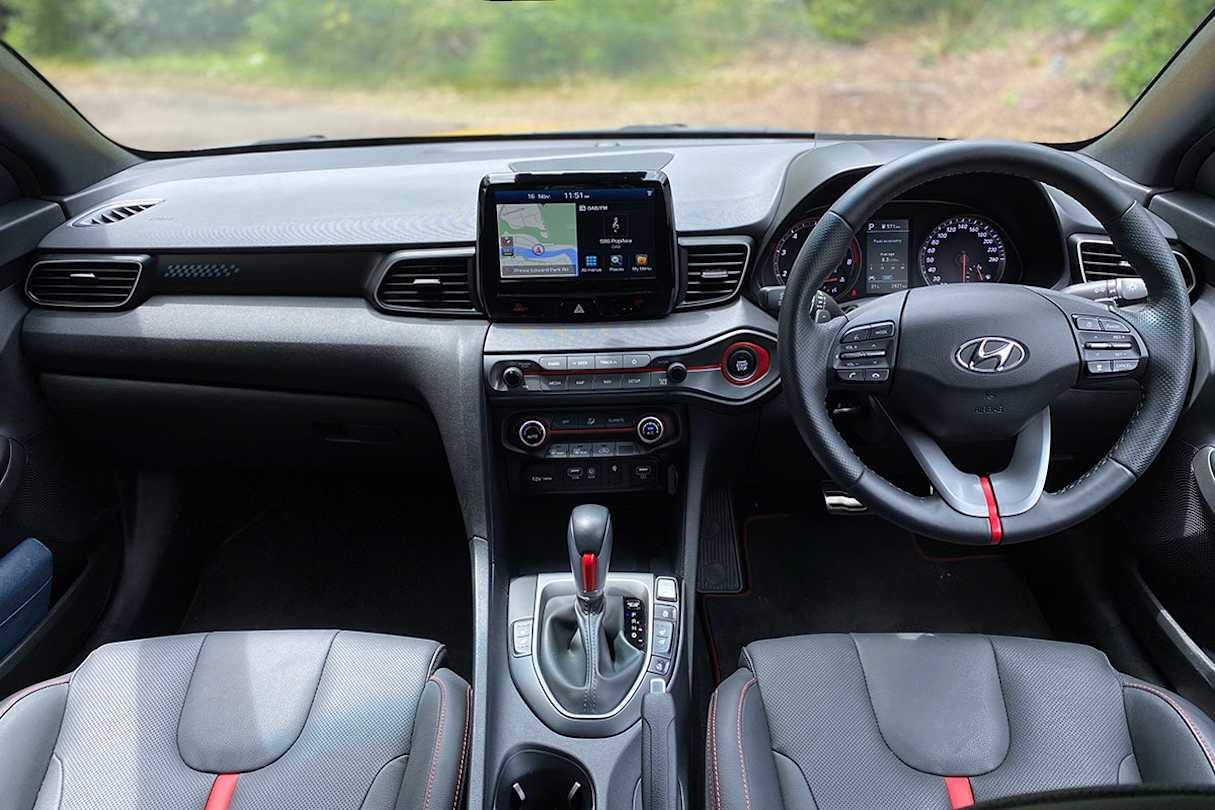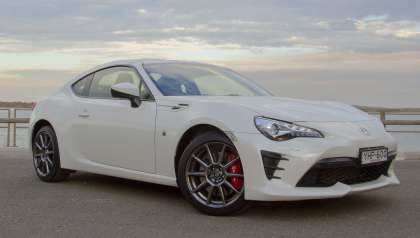Giant carmakers seem like pretty sober sorts of places. Everything goes through endless committees, every decision has to be signed off, sent in, sent back, subjected to endless scrutiny to make sure it will make money.
Sometimes, a brand will do something odd like BMW's i3 which is like sending up a flare to get people talking.
Hyundai, for many years, seemed to be trying to emulate Toyota. After a brief flourish in the '90s when it did for curves on cars what Kim Kardashian did for curves on grubby internet sites, the company lost its bottle and tried to go full mainstream. Never go full mainstream, that's for the old folks.
Then, out of the blue, came the Veloster. It's probably one of the most wilfully weird cars in decades (apart from various Citroens, but that's a special case).

One long door on the driver's side, two shorter doors on the passenger side. When BMW did something similar with the Mini Clubman, right-hand drive markets didn't get their own version of the kerb-side door, but Hyundai isn't like that.
Making the Veloster properly in right-hand drive is a wonderful gesture from a company that worked out being itself was a better idea than being Toyota.
Hyundai Veloster 2020: Turbo Premium
| Engine Type | Turbo 4, 1.6L |
|---|---|
| Fuel Type | Unleaded Petrol |
| Fuel Efficiency | 7.3L/100km (combined) |
| Seating | 4 |
| Price From | $23,210 - $28,710 |
Does it represent good value for the price? What features does it come with?
7 / 10
Remarkably, Hyundai has just dropped the second-generation Veloster in Australia. I was convinced it would be a one-hit wonder, but here we are with the replacement for the SR Turbo of the first-generation, the $41,990 Veloster Turbo Premium with a seven-speed dual-clutch auto transmission.

It also has 18-inch alloys with sticky Michelin Pilot Sport 4 tyres, an eight-speaker stereo, sat nav, electric windows and mirrors, keyless entry and start, climate control, reversing camera, rear parking sensors, auto LED headlights, auto high beam, auto wipers, heated and ventilated electric front seats, sunroof, Qi wireless charging pad, head-up display, leather trim and a space-saver spare.
A 7.0-inch screen on the dash runs the media system, with a sat nav, Apple CarPlay and Android Auto. It all works very nicely and the generally ho-hum Infinity speakers do a solid if unspectacular job of filling the cabin with noise.
Is there anything interesting about its design?
8 / 10
You do not have to find the Veloster pretty to think it's cool. You can see echoes of the i30 donor car that lurks under the more interesting metal, with a big grille, sharper headlights and plenty of black bits to up the aggro for the Turbo model.
The rear bumper sports a pair of drainpipe-sized exhausts that aren't afraid to bellow a bit.

It's different from right to left in profile, with the rear door almost disappearing into the rear haunches on the passenger side. The high rear glass may not be great for seeing out of but it helps keep the Veloster identifiable and influential - there are more than a few cars getting about sporting a similar high rump with big lights.
The cabin is, like its predecessor, fairly restrained and very i30-like. It's all put together very well and is only let down by the centre console's plastics being a bit hard, scratchy and insubstantial.
How practical is the space inside?
7 / 10
I think the Veloster is very clever. M'colleague Richard Berry thinks the third door is a bit silly - say, like a third armpit. I'm of the opinion it's an exceptionally clever solution to a problem: how do I have a funky car without throwing the baby out with the bathwater?
Something like a three door hatch (yes, I know they're out of vogue) makes moving people about difficult even if you only do it occasionally. The Veloster's third door provides relatively easy access to the two back seats for people under about 150cm, and you can get okay access to a baby seat. Try that in an 86.
The new door aperture is quite a bit bigger than the old car and there is a bit more rear headroom which I'd still call marginal for my 179cm frame. Leg and knee room are okay, sitting behind my own driving position.

The boot is a useful if not staggering 303 litres. You have four cupholders across the two rows and door pockets in the front doors. Ahead of the gear selector you'll find a tray with the Qi charging pad and two USB connections, but only one will work with the stereo and is marked as such.
What are the key stats for the engine and transmission?
7 / 10
The 1.6-litre turbo-petrol four-cylinder is a familiar sight in Hyundais, in this case offering up 150kW at 6000rpm and 265Nm between 1500 and 4500rpm, which is a nice wide torque curve. Power goes to the front wheels via a seven-speed dual-clutch automatic transmission.
Performance is swift rather than startling, with the Veloster's 1350kg cracking the ton in the 7.1 seconds, 0.6 seconds quicker than the manual.

How much fuel does it consume?
8 / 10
Hyundai claims you'll get 6.9L/100km on the combined cycle. As ever, Hyundai is unusually close to real world figures, with my indicated average landing at a very respectable 8.2L/100km in a fairly urban kind of week.

Warranty & Safety Rating
What safety equipment is fitted? What safety rating?
7 / 10
This Veloster arrives with six airbags, ABS, stability and traction controls, lane keep assist, blind spot warning, rear cross traffic alert, forward collision warning and forward AEB with pedestrian detection.
Although not rated by ANCAP at the time of writing, the Turbo and Turbo Premium are likely to score a maximum five stars.
The lower grade - as with other newer Hyundais with the lower spec AEB - is probably going to drop a star.
Both rear seats score an ISOFIX and top tether anchor point.
What does it cost to own? What warranty is offered?
7 / 10
As always, Hyundai's solid five year/unlimited kilometre warranty is along for the ride. Slightly annoyingly, you'll need to return to your dealer every 12 months or 10,000km for scheduled service and prices are capped.
Four of the five services cost $299 with the fourth year at $375. Over the first five services, you'll average $314.
What's it like to drive?
8 / 10
I was fortunate enough to have some time on my hands, so I volunteered to take the base spec Veloster to Hyundai to swap into the Turbo. And look, it's fine, but in the same way the second-to-last-Celica was fine - nothing to write home about, more show than go. Comfortable, quiet, hatchy.
And the Turbo is many of those things. Except, as in the i30, when you step up to the turbo engine it wakes up a chassis that is truly terrific.
While it rides really, really well, it also piles through corners with even more enthusiasm than a similarly powered i30 N-Line, which is no slouch.
The Veloster is lower and slightly lighter, adding to the fun. And it doesn't spend half the time hitting the bump stops like the old car.
There are almost no duds in the Hyundai range when it comes to ride and handling, but the steering is in another league compared to the outgoing model's.

It's quick and points the car where you want, the front end digging in and tracking clean and true. It's terrific fun.
But, like just about every other Hyundai, its compliance and daily drivability is super-impressive. Only bad roads upset the rear suspension but the front is largely unflappable.
Flappable is the dual-clutch transmission. It occasionally hunts around looking for a gear and I spent a lot of time pulling the paddles to get it to do the right thing.
It was particularly recalcitrant downshifting without manual intervention, no matter what drive mode I chose. It can also clunk a bit when it's confused. I reckon I'd take Richard's advice and stick with a manual.
Verdict
Another good bit of Berry wisdom was the idea that the Turbo is the sweet spot of the range. While the Premium is indeed packed with goodies, they're not must-haves - the Turbo has everything you need while the Premium adds the wants.
So, at its core, this Turbo Premium is good warm hatch fun in a wacky, head-turning body, wrapped around a good cabin that could be a little less plasticky. Best of all, the fun design matches the fun-to-drive personality. It's a thoroughly modern Hyundai and I want (even more) to drive the full-fat bonkers N version we look like we're not going to get.

















.jpg)

.jpg)


.png)


.jpg)
